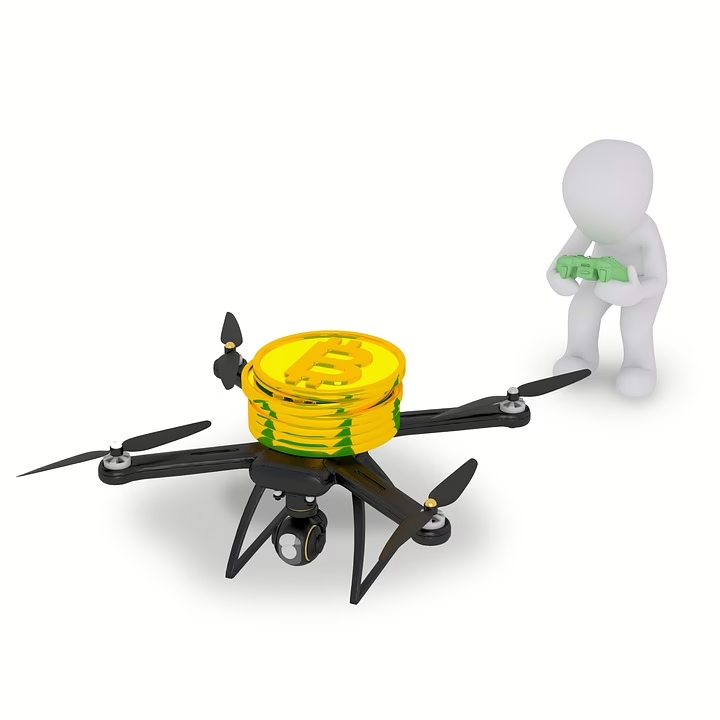Crypto Investing 101: A Beginner’s Guide
The world of cryptocurrency has exploded in recent years, transforming from a niche interest into a mainstream financial phenomenon. News headlines blare about Bitcoin’s volatile price swings, Ethereum’s smart contracts, and the rise of meme coins. For newcomers, the sheer volume of information, the jargon, and the perceived complexity can be overwhelming. This guide aims to demystify the world of crypto investing, providing a comprehensive introduction to the fundamentals, strategies, risks, and tools necessary for navigating this exciting, yet potentially perilous, landscape. We’ll explore the underlying technology, the various types of cryptocurrencies, different investment approaches, security considerations, and the regulatory environment, equipping you with the knowledge to make informed decisions.
1. Understanding the Blockchain and Cryptocurrency
Before diving into investment strategies, it’s crucial to understand the foundation upon which cryptocurrencies are built: the blockchain.
1.1 What is a Blockchain?
Imagine a digital ledger, distributed across a vast network of computers. This ledger records every transaction, making it transparent and immutable. That’s essentially what a blockchain is. It’s a shared, secure, and distributed database that operates without the need for a central authority like a bank or government.
- Blocks: Transactions are bundled together into “blocks,” which are then cryptographically linked to the previous block in the chain.
- Cryptography: Advanced cryptographic techniques ensure the integrity and security of the data. Each block contains a hash, a unique digital fingerprint, of the previous block. Any alteration to a previous block would change its hash, invalidating all subsequent blocks and making tampering easily detectable.
- Decentralization: Instead of residing on a single server controlled by a single entity, the blockchain is replicated across numerous computers, making it highly resistant to censorship and single points of failure.
- Consensus Mechanisms: To ensure that all nodes in the network agree on the validity of new transactions, consensus mechanisms are used. These mechanisms, like Proof-of-Work (PoW) and Proof-of-Stake (PoS), ensure that the network remains secure and consistent.
1.2 What is Cryptocurrency?
Cryptocurrency is a digital or virtual currency that uses cryptography for security. It operates independently of a central bank and can be used to buy goods and services, or traded as an investment. Cryptocurrencies utilize blockchain technology to record transactions, providing transparency and security.
- Decentralized: Cryptocurrencies are not controlled by any single entity, making them resistant to government censorship and manipulation.
- Transparent: All transactions are recorded on the blockchain, making them publicly auditable.
- Secure: Cryptography ensures the security of transactions and protects against fraud.
- Limited Supply (Often): Many cryptocurrencies have a predetermined maximum supply, which can help to protect against inflation. Bitcoin, for example, has a hard cap of 21 million coins.
1.3 Key Differences from Traditional Finance
Understanding the fundamental differences between cryptocurrencies and traditional financial systems is vital for informed investment.
| Feature | Traditional Finance | Cryptocurrency |
|---|---|---|
| Central Authority | Controlled by banks, governments, etc. | Decentralized, no single controlling entity |
| Transaction Speed | Can take days for international transfers | Can be near-instantaneous, depending on the network |
| Transparency | Opaque, often with limited visibility | Transparent, all transactions recorded on blockchain |
| Access | Limited by bank accounts and regulations | Open to anyone with an internet connection |
| Volatility | Generally lower volatility | High volatility, subject to rapid price swings |
| Operating Hours | Limited by banking hours | Operates 24/7, 365 days a year |
2. Types of Cryptocurrencies
The cryptocurrency landscape is vast and varied, encompassing thousands of different coins and tokens. Understanding the different categories can help you narrow your focus and make more informed investment decisions.
2.1 Bitcoin (BTC)
Bitcoin, the first and most well-known cryptocurrency, was created in 2009 by an anonymous person or group using the pseudonym Satoshi Nakamoto. It is designed as a peer-to-peer electronic cash system, allowing for direct transactions without intermediaries. Bitcoin’s limited supply of 21 million coins makes it attractive to some as a store of value, often compared to gold (digital gold). It uses the Proof-of-Work (PoW) consensus mechanism.
2.2 Ethereum (ETH)
Ethereum is a blockchain platform that enables the creation of decentralized applications (dApps) and smart contracts. While it also has its own cryptocurrency, Ether (ETH), its primary function is as a platform for developers. Smart contracts are self-executing agreements written in code, which can automate various processes, from financial transactions to supply chain management. Ethereum is transitioning to Proof-of-Stake (PoS), a more energy-efficient consensus mechanism.
2.3 Altcoins
“Altcoin” is a catch-all term for any cryptocurrency other than Bitcoin. They encompass a wide range of projects with varying goals and technologies.
- Layer-1 Blockchains: These are blockchains that serve as the foundation for other applications and projects. Examples include Solana (SOL), Cardano (ADA), and Avalanche (AVAX). They often focus on improving scalability, transaction speed, and energy efficiency compared to Bitcoin and Ethereum.
- Stablecoins: Stablecoins are cryptocurrencies designed to maintain a stable value, typically pegged to a fiat currency like the US dollar. Examples include Tether (USDT), USD Coin (USDC), and Dai (DAI). They are often used as a bridge between the traditional financial system and the cryptocurrency world, allowing traders to move funds quickly and efficiently.
- Meme Coins: Meme coins are cryptocurrencies that originated as internet jokes or memes. They often gain popularity rapidly through social media and online communities. Examples include Dogecoin (DOGE) and Shiba Inu (SHIB). Investing in meme coins is highly speculative and carries significant risk due to their extreme volatility and dependence on online trends.
- Decentralized Finance (DeFi) Tokens: DeFi tokens power decentralized financial applications, such as lending platforms, decentralized exchanges (DEXs), and yield farming protocols. Examples include AAVE, Uniswap (UNI), and Maker (MKR).
- Non-Fungible Tokens (NFTs): While not strictly cryptocurrencies, NFTs are digital assets that represent unique items, such as artwork, collectibles, or in-game assets. They are built on blockchain technology and can be bought, sold, and traded.
3. Getting Started with Crypto Investing
Now that you have a basic understanding of the technology and the different types of cryptocurrencies, let’s explore the practical steps involved in getting started with crypto investing.
3.1 Choosing a Cryptocurrency Exchange
A cryptocurrency exchange is a platform where you can buy, sell, and trade cryptocurrencies. Choosing the right exchange is crucial for a safe and efficient investment experience.
- Centralized Exchanges (CEXs): CEXs are platforms that act as intermediaries between buyers and sellers. They typically offer a wider range of cryptocurrencies, higher liquidity, and more user-friendly interfaces than DEXs. Examples include Binance, Coinbase, Kraken, and Gemini. CEXs require users to create accounts and undergo KYC (Know Your Customer) verification.
- Decentralized Exchanges (DEXs): DEXs are platforms that allow users to trade cryptocurrencies directly with each other, without the need for an intermediary. They offer greater privacy and control over funds but can be more complex to use. Examples include Uniswap, PancakeSwap, and SushiSwap.
- Factors to Consider:
- Security: Look for exchanges with strong security measures, such as two-factor authentication (2FA), cold storage of funds, and insurance against hacks.
- Fees: Compare trading fees, deposit fees, and withdrawal fees across different exchanges.
- Liquidity: Choose an exchange with high liquidity, ensuring that you can buy and sell cryptocurrencies quickly and easily.
- Cryptocurrency Selection: Ensure the exchange offers the cryptocurrencies you are interested in investing in.
- User Interface: Select an exchange with a user-friendly interface that is easy to navigate, especially if you are a beginner.
- Reputation: Research the exchange’s reputation and read reviews from other users.
- Regulatory Compliance: Check if the exchange is compliant with relevant regulations in your jurisdiction.
3.2 Setting Up an Account and Completing KYC
Once you’ve chosen an exchange, you’ll need to create an account and complete the KYC process. KYC involves providing personal information and documentation to verify your identity. This is a regulatory requirement designed to prevent money laundering and other illicit activities.
- Required Information: Typically, you’ll need to provide your full name, address, date of birth, and government-issued identification (such as a passport or driver’s license).
- Verification Process: The exchange will verify your identity by reviewing your submitted documents. This process can take anywhere from a few minutes to several days, depending on the exchange and the volume of applications.
3.3 Funding Your Account
After your account is verified, you’ll need to fund it before you can start trading. Most exchanges offer various funding methods.
- Bank Transfers: Bank transfers are a common way to fund your account, but they can take several days to process.
- Credit/Debit Cards: Credit and debit card deposits are typically faster, but they often come with higher fees.
- Cryptocurrency Deposits: You can also deposit cryptocurrencies from other wallets or exchanges. This is a common method for experienced crypto users.
3.4 Buying Your First Cryptocurrency
Once your account is funded, you’re ready to buy your first cryptocurrency.
- Market Orders: A market order executes immediately at the best available price. This is the simplest way to buy cryptocurrency but may not result in the best price.
- Limit Orders: A limit order allows you to specify the price at which you want to buy or sell. The order will only be executed if the market price reaches your specified limit.
- Stop-Limit Orders: A stop-limit order combines a stop price and a limit price. The order becomes a limit order when the market price reaches the stop price.
- Order Books: The order book displays all the buy and sell orders for a particular cryptocurrency on an exchange. It shows the available prices and quantities at which people are willing to buy or sell.
4. Investment Strategies
There are several investment strategies you can employ when investing in cryptocurrencies. The best strategy for you will depend on your risk tolerance, investment goals, and time horizon.
4.1 Dollar-Cost Averaging (DCA)
Dollar-cost averaging involves investing a fixed amount of money at regular intervals, regardless of the price of the asset. This strategy helps to mitigate the impact of volatility and can reduce the risk of buying at the top of the market.
- Example: Instead of investing $1,200 in Bitcoin at once, you could invest $100 each month for a year. This would allow you to buy more Bitcoin when the price is low and less when the price is high, averaging out your cost basis over time.
4.2 Long-Term Hodling
“Hodling” is a term derived from a misspelling of “holding” and refers to the strategy of buying and holding cryptocurrencies for the long term, regardless of short-term price fluctuations. This strategy is based on the belief that the value of certain cryptocurrencies will increase significantly over time.
- Research is Key: Before hodling any cryptocurrency, it’s essential to thoroughly research the project, its team, its technology, and its long-term potential.
- Risk Management: Even with long-term hodling, it’s important to diversify your portfolio and manage your risk.
4.3 Trading Strategies
Trading strategies involve actively buying and selling cryptocurrencies to profit from short-term price movements.
- Day Trading: Day trading involves buying and selling cryptocurrencies within the same day, aiming to profit from small price fluctuations. This strategy requires significant time, knowledge, and discipline.
- Swing Trading: Swing trading involves holding cryptocurrencies for several days or weeks, aiming to profit from larger price swings.
- Technical Analysis: Technical analysis involves using charts and technical indicators to identify patterns and predict future price movements.
- Fundamental Analysis: Fundamental analysis involves evaluating the underlying value of a cryptocurrency project by analyzing its technology, team, adoption rate, and market potential.
4.4 Staking and Lending
Staking and lending are ways to earn passive income with your cryptocurrency holdings.
- Staking: Staking involves holding cryptocurrencies in a wallet to support the operation of a Proof-of-Stake (PoS) blockchain. In return for staking your coins, you earn rewards in the form of additional coins.
- Lending: Lending involves lending your cryptocurrencies to other users or institutions through a lending platform. You earn interest on the loans.
5. Security Considerations
Security is paramount when investing in cryptocurrencies. Because transactions are irreversible, protecting your assets from theft and loss is crucial.
5.1 Understanding Wallet Types
Cryptocurrencies are stored in digital wallets. There are different types of wallets, each with its own security and convenience trade-offs.
- Hardware Wallets: Hardware wallets are physical devices that store your private keys offline, making them highly secure. They are considered the gold standard for storing large amounts of cryptocurrency. Examples include Ledger and Trezor.
- Software Wallets: Software wallets are applications that can be installed on your computer or mobile device. They are more convenient than hardware wallets but less secure, as they are vulnerable to malware and hacking. Examples include Exodus and Trust Wallet.
- Exchange Wallets: Exchange wallets are wallets provided by cryptocurrency exchanges. They are convenient for trading but are considered the least secure option, as you do not control your private keys.
- Paper Wallets: Paper wallets are generated offline and consist of a printout of your public and private keys. They are highly secure if stored properly but can be cumbersome to use.
5.2 Best Practices for Securing Your Crypto
Implementing strong security practices is essential for protecting your cryptocurrency investments.
- Two-Factor Authentication (2FA): Enable 2FA on all your cryptocurrency accounts. 2FA requires you to enter a code from your mobile device in addition to your password, adding an extra layer of security.
- Strong Passwords: Use strong, unique passwords for all your cryptocurrency accounts. Avoid using the same password for multiple accounts. Use a password manager to generate and store your passwords securely.
- Cold Storage: Store the majority of your cryptocurrency holdings in a cold storage wallet (hardware wallet or paper wallet).
- Be Wary of Phishing: Be cautious of phishing emails and websites that attempt to steal your login credentials. Always verify the website address and sender before entering any personal information.
- Keep Your Software Updated: Keep your operating system, antivirus software, and cryptocurrency wallet software up to date to protect against vulnerabilities.
- Backup Your Wallet: Regularly back up your cryptocurrency wallet to prevent data loss.
- Use a VPN: Use a Virtual Private Network (VPN) to encrypt your internet traffic and protect your privacy.
5.3 Common Scams and How to Avoid Them
The cryptocurrency world is rife with scams. Being aware of these scams and how to avoid them is crucial for protecting your investments.
- Phishing Scams: Phishing scams involve sending fraudulent emails or messages that appear to be from legitimate sources, such as cryptocurrency exchanges or wallet providers. These messages typically attempt to trick you into revealing your login credentials or private keys.
- How to Avoid: Always verify the sender of any email or message before clicking on any links or providing any personal information. Never share your private keys with anyone.
- Pump and Dump Schemes: Pump and dump schemes involve artificially inflating the price of a cryptocurrency through coordinated buying, then selling the cryptocurrency at a profit before the price collapses.
- How to Avoid: Be wary of cryptocurrencies with little or no real-world value that experience sudden price spikes. Do your own research and avoid blindly following investment advice from online communities.
- Ponzi Schemes: Ponzi schemes involve paying returns to early investors using money from new investors, rather than from actual profits. These schemes eventually collapse when they run out of new investors.
- How to Avoid: Be skeptical of any investment that promises unrealistically high returns with little or no risk.
- Fake ICOs: Fake Initial Coin Offerings (ICOs) involve creating fraudulent cryptocurrency projects to raise funds from investors.
- How to Avoid: Thoroughly research any ICO before investing. Check the team’s credentials, the project’s whitepaper, and the project’s technology.
- Romance Scams: Romance scams involve building a relationship with someone online, then asking them for money to invest in cryptocurrency.
- How to Avoid: Be cautious of anyone you meet online who asks you for money, especially if they are pressuring you to invest in cryptocurrency.
6. Tax Implications of Crypto Investing
Cryptocurrency investments are subject to taxes, and it’s important to understand the tax implications in your jurisdiction.
6.1 Taxable Events
Several events can trigger tax obligations when dealing with cryptocurrencies.
- Selling Cryptocurrency: Selling cryptocurrency for fiat currency (like USD) or another cryptocurrency is generally a taxable event. You may realize a capital gain or loss depending on the difference between the price you bought the cryptocurrency for and the price you sold it for.
- Trading Cryptocurrency: Trading one cryptocurrency for another is also a taxable event.
- Using Cryptocurrency to Buy Goods or Services: Using cryptocurrency to purchase goods or services is treated as a sale of the cryptocurrency, which can trigger a capital gain or loss.
- Receiving Cryptocurrency as Income: Receiving cryptocurrency as payment for goods or services is considered taxable income.
- Staking Rewards: Staking rewards are generally considered taxable income in the year they are received.
6.2 Capital Gains and Losses
Capital gains and losses are the profits or losses you realize when you sell or trade a capital asset, such as cryptocurrency.
- Short-Term Capital Gains: Short-term capital gains are profits from assets held for one year or less. They are taxed at your ordinary income tax rate.
- Long-Term Capital Gains: Long-term capital gains are profits from assets held for more than one year. They are taxed at a lower rate than short-term capital gains.
6.3 Record Keeping
Maintaining accurate records of your cryptocurrency transactions is crucial for tax purposes.
- Transaction History: Keep a record of all your cryptocurrency transactions, including the date, time, type of transaction (buy, sell, trade, etc.), the amount of cryptocurrency involved, and the fair market value of the cryptocurrency at the time of the transaction.
- Wallet Addresses: Keep a record of all your cryptocurrency wallet addresses.
- Exchange Statements: Download and save statements from all cryptocurrency exchanges you use.
6.4 Tax Software and Professional Advice
Several cryptocurrency tax software programs can help you calculate your tax obligations. It’s also advisable to consult with a tax professional who is knowledgeable about cryptocurrency taxation.
7. The Regulatory Landscape
The regulatory landscape for cryptocurrencies is still evolving, and it varies significantly from country to country.
7.1 Global Regulations
Different countries have adopted different approaches to regulating cryptocurrencies.
- United States: The United States has a complex regulatory framework for cryptocurrencies, with multiple agencies (SEC, CFTC, IRS) having jurisdiction.
- European Union: The European Union is working on a comprehensive regulatory framework for cryptocurrencies called the Markets in Crypto-Assets (MiCA) regulation.
- China: China has banned all cryptocurrency trading and mining activities.
- Other Countries: Other countries have adopted a variety of approaches, ranging from outright bans to more permissive regulatory frameworks.
7.2 Impact on Investors
Regulations can have a significant impact on cryptocurrency investors.
- Increased Compliance Costs: Regulations can increase compliance costs for cryptocurrency exchanges and businesses, which may be passed on to investors.
- Reduced Access to Cryptocurrencies: Regulations can restrict access to certain cryptocurrencies or exchanges.
- Increased Security: Regulations can improve the security and transparency of the cryptocurrency market, protecting investors from fraud and scams.
7.3 Staying Informed
It’s important to stay informed about the latest regulatory developments in your jurisdiction. Follow industry news and consult with legal and tax professionals to ensure that you are compliant with all applicable regulations.
8. Resources for Learning More
The world of cryptocurrency is constantly evolving, so continuous learning is essential. Here are some resources to help you stay informed and improve your understanding.
- Online Courses: Platforms like Coursera, Udemy, and edX offer courses on blockchain technology, cryptocurrency investing, and related topics.
- Websites and Blogs: Websites like CoinDesk, CoinMarketCap, and CryptoPotato provide news, analysis, and educational resources on cryptocurrencies.
- Books: Several books provide in-depth information on cryptocurrencies and blockchain technology.
- Podcasts: Podcasts like “Unchained,” “The Pomp Podcast,” and “Bankless” offer insightful discussions on the latest developments in the cryptocurrency space.
- Online Communities: Online communities like Reddit’s r/Bitcoin and r/CryptoCurrency provide a forum for discussing cryptocurrencies and sharing information.
9. Risks and Challenges
Investing in cryptocurrencies comes with inherent risks. Understanding these risks is crucial before committing any capital.
- Volatility: Cryptocurrencies are notoriously volatile, with prices subject to rapid and unpredictable swings. This volatility can lead to significant gains, but also substantial losses.
- Security Risks: Cryptocurrency exchanges and wallets are vulnerable to hacking and theft. Even with strong security measures, there’s always a risk of losing your funds.
- Regulatory Uncertainty: The regulatory landscape for cryptocurrencies is still evolving, and new regulations could negatively impact the value of your investments.
- Lack of Insurance: Cryptocurrency investments are typically not insured by government agencies like the FDIC, meaning you could lose your entire investment if the exchange or wallet you are using is hacked or goes bankrupt.
- Complexity: Understanding the technology and economics behind cryptocurrencies can be challenging, especially for beginners.
- Scams and Fraud: The cryptocurrency world is rife with scams and fraudulent projects, making it essential to do your research and be cautious of investment opportunities that seem too good to be true.
- Liquidity Risk: Some cryptocurrencies have low trading volume, making it difficult to buy or sell them quickly at a desired price.
- Smart Contract Risk: Decentralized applications (dApps) and DeFi platforms rely on smart contracts, which can be vulnerable to bugs and exploits. If a smart contract is compromised, you could lose your funds.
10. Conclusion
Crypto investing offers both tremendous opportunities and significant risks. By understanding the fundamentals of blockchain technology, the different types of cryptocurrencies, various investment strategies, security considerations, and the regulatory landscape, you can approach this exciting asset class with greater confidence. Remember to do your own research, manage your risk, and stay informed about the latest developments in the industry. Don’t invest more than you can afford to lose, and always prioritize security. While the potential rewards are substantial, the journey into the world of crypto requires careful consideration and a commitment to continuous learning. This guide is a starting point, and further exploration is crucial for navigating the complexities of the cryptocurrency market successfully. The future of finance is evolving, and understanding cryptocurrencies is becoming increasingly important in today’s world.
References
[mfn 1] Nakamoto, S. (2008). Bitcoin: A Peer-to-Peer Electronic Cash System. [Online] Available at: bitcoin.org/bitcoin.pdf [mfn 2] Buterin, V. (2014). A Next-Generation Smart Contract and Decentralized Application Platform. [Online] Available at: ethereum.org/en/whitepaper/ [mfn 3] Antonopoulos, A. M. (2017). Mastering Bitcoin: Programming the Open Blockchain. O’Reilly Media. [mfn 4] Swan, M. (2015). Blockchain: Blueprint for a New Economy. O’Reilly Media.

























Add Comment